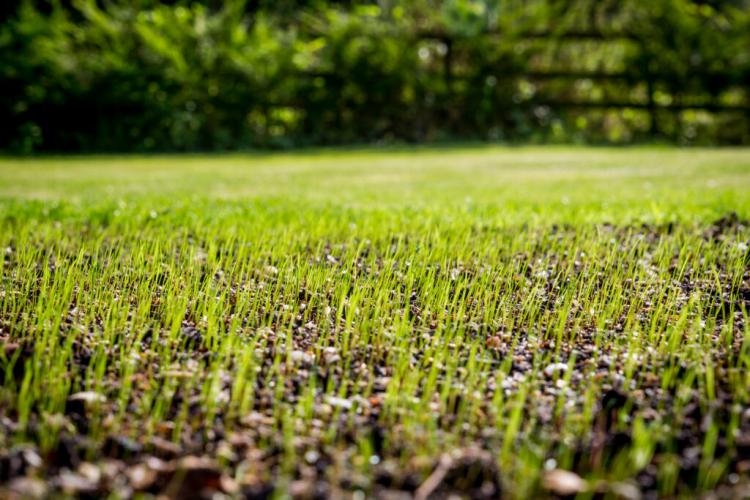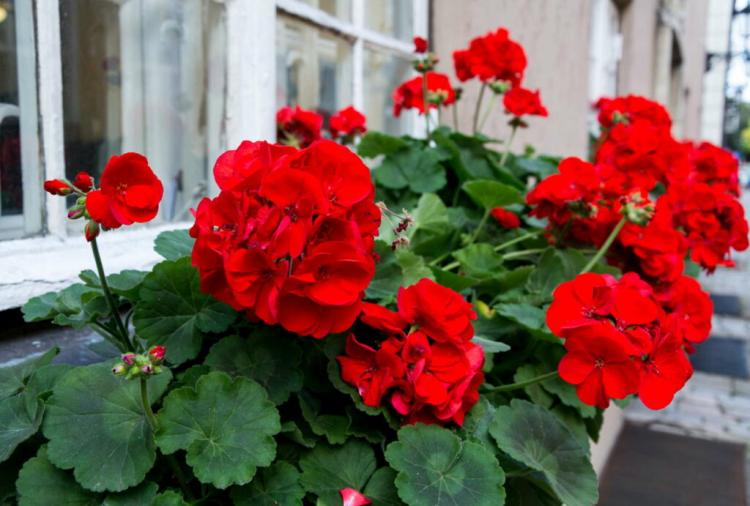Chandelier flowers: care, flowering & location
Candlestick flowers have eye-catching flowers that sometimes look like candlesticks, but sometimes also like small parachutes. We present the most beautiful species and explain what needs to be considered when caring for them.

Each type of chandelier flower has its own special flowers [Photo: RealityImages / Shutterstock.com]
In addition to the well-known String of Hearts, there are many other chandelier flowers that can be kept as indoor plants. Most are quite easy to care for and immediately catch the eye due to their special flowers. Here you will find all the information about care, location and the most beautiful species.
Candlestick flowers: flowering, origin and characteristics
Table of Contents
The genus of candlestick flowers ( Ceropegia ) belongs to the dog venom family (Apocynaceae) and is widespread in Africa, Asia and Australia. The plants got their name from their flowers, the shape of which is reminiscent of small candlesticks. Depending on the species, the flowers have different shapes and colors. They are also known as sliding traps because they attract insects to pollinate. The insects are then briefly caught in the flower and are only released again after they have ingested the pollen. If the Ceropegia is in a suitable location with sufficient light, it can bear flowers for the entire vegetation period. Candlestick flowers form long runners that either crawl over the ground or climb up other plants. Some species are evergreen while others shed their leaves. Many of the species are succulents and store water in their leaves, roots or in the shoot.
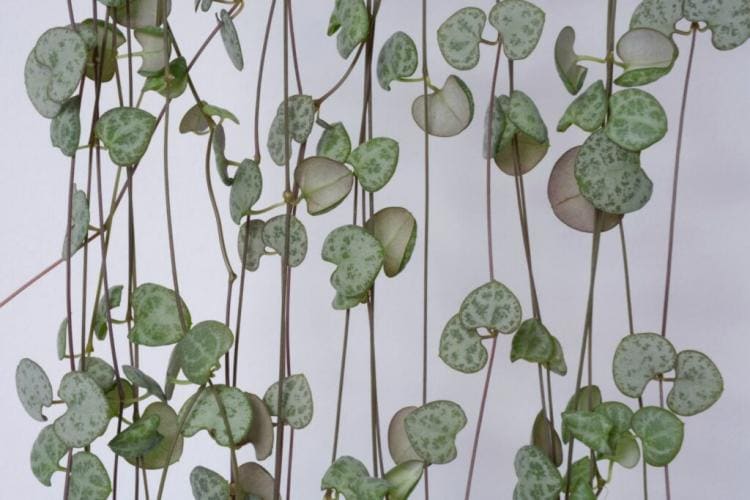
Water can be stored in the leaves, or in the roots or in the shoot [Photo: Ellyy / Shutterstock.com]
The most beautiful Ceropegia species and varieties
Chandelier flowers can look very different. This affects flowers as well as leaves. We briefly present the most beautiful species here:
Ceropegia ampliata : The flowers of this Ceropegia are white to light green and have a tubular shape. The deciduous leaves are lanceolate and sit on long, tapering shoots that can be up to two meters long. They are quickly thrown off after budding. Ceropegia ampliata is native to South Africa and Madagascar.
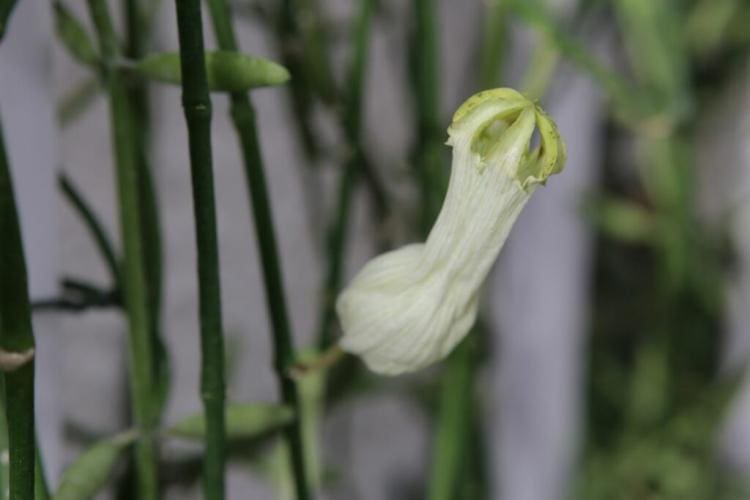
Ceropegia ampliata with light green tubular flowers [Photo: Jojoo64 / Shutterstock.com]
Ceropegia armandii : This species has particularly unusual flowers, because in this case the umbrella consists of five yellow-green tubes that form a kind of cage around the center of the flower. The trunk is mostly woody at the base and long shoots arise from it during the growing season. Here, too, the leaves are quickly thrown off after they have sprouted. Ceropegia armandii needs a large pot for its roots. It thrives best in a slightly acidic cactus substrate.
Ceropegia sandersonii : Because of its flower shape, this climbing species is also known as the parachute flower or umbrella flower. The greenish-pink flowers look as if they were covered by an umbrella. It originally comes from southern Africa and is (like many Ceropegia species) also kept as a houseplant.

It quickly becomes clear why Ceropegia sandersonii is also known as the parachute flower [Photo: Fabrizio Guarisco / Shutterstock.com]
Ceropegia stapeliiformis : The petals of this species are very narrow and pointed. When the flower is open, they act like funnels. The small leaves are thrown off after a short time. This candlestick flower is considered to be a more demanding species, especially when it comes to the right amount of water. She also prefers a slightly alkaline cactus soil.

Ceropegia stapeliiformis is also known as the “Snake Creeper” [Photo: COULANGES / Shutterstock.com]
Ceropegia woodii : The evergreen String of Hearts is one of the most popular Ceropegia indoor plants. The heart-shaped leaves on the long shoots can be staged in a traffic light pot. Compared to many other Ceropegia species, the flower is rather inconspicuous, but impresses with its beautiful pink tint.
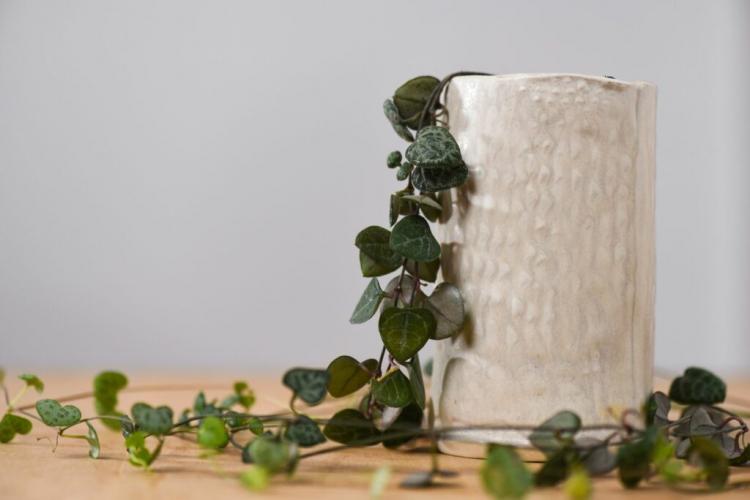
The String of Hearts is also very popular for its heart-shaped leaves [Photo: Shot Stalker / Shutterstock.com]
Ceropegia haygarthii : This semi-evergreen species belongs to the stem succulents, which means that water is stored in the shoot. This gives the plant a special look, as the shoots are thick and bright green. But the flowers are also impressive, with their creamy-white-red flecked color.
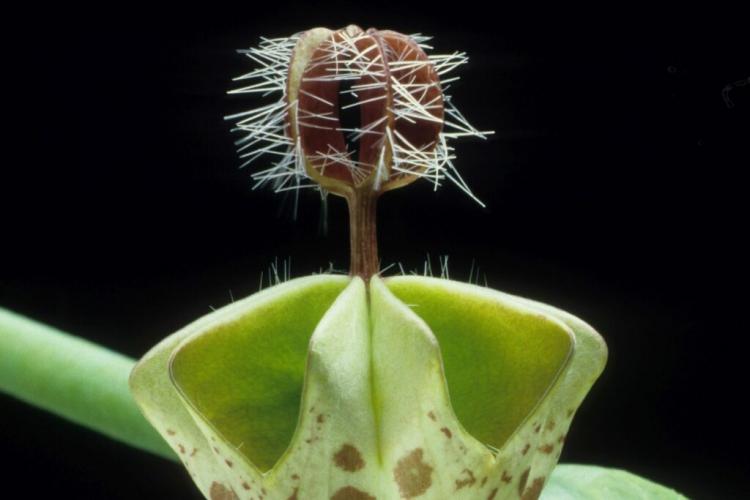
Ceropegia haygarthii can also store water in the scion [Photo: COULANGES / Shutterstock.com]
Planting candlestick flowers: location, soil and Co.
Chandelier flowers prefer a bright place in the apartment. If they are too shady, the leaves can fade and the stem axes become long and unstable. However, permanent direct sunlight can lead to leaf damage. Chandelier flowers like to see a few hours of sunshine in the morning or in the evening. A normal room temperature is sufficient for them.
Tip : Candlestick flowers can be kept at room temperature all year round. But it is also possible to overwinter the plant cooler. In this way, you give it a break and stimulate flower formation. A temperature of around 10 ° C is suitable for this, the plant then needs even less water.
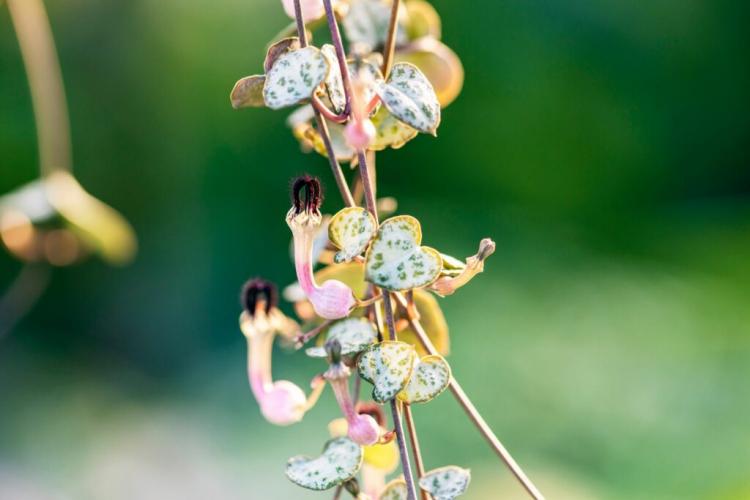
If the location is bright enough without direct sun, candlestick flowers form many blossoms [Photo: Fabrizio Guarisco / Shutterstock.com]
Give your chandelier flower a substrate that is above all well-drained and well-drained. Waterlogging can lead to root rot and will not get the succulent at all. A high-quality plant soil, such as our Plantura organic universal soil, is ideally suited for the candlestick flower. Due to the clay minerals it contains, water can be stored in the best possible way and given to the plant when required. So there is no constant watering and the substrate does not get wet. To further increase the permeability, you can make a mixture of two parts of earth and one part of expanded clay, sand, lava grit or pumice.
The planter should definitely have a drainage hole through which excess water can drain. For better drainage, put a layer of pebbles or a comparable coarse material at the bottom of the pot.
Chandelier flower care: the most important measures
There is not much involved in caring for candlestick flowers, because like numerous succulents, most types of candlestick flowers are quite easy to care for.
Water and fertilize
Ceropegia species, like any other plant, need water and nutrients from time to time. However, you should be more economical in both cases, otherwise there is a risk of waterlogging and over-fertilization. In the summer, give the candlestick a little water once or twice a week so that the root ball does not dry out. The substrate surface can dry out in the meantime. If water runs out of the pot into the planter or saucer, remove it after watering. One fertilization is sufficient during the growing season between April and September every four weeks. High-quality liquid fertilizers are suitable for this, such as our primarily organic Plantura organic indoor & green plant fertilizer. This is added with the irrigation water and provides the plant with the nutrients directly. The organic fertilizer ensures healthy growth and strengthens roots as well as leaves. It also contains useful microorganisms that can protect the roots from fungal diseases. Since succulents have a rather low nutritional requirement, a dosage of half the concentration is sufficient.
Cut candlestick flower
Since candlestick flowers usually form long runners, you may want to shorten the plant. A pruning is not necessary, but with the Ceropegia it ensures that no new shoots are formed. To do this, cut the shoot at the desired point with a sharp knife in spring. The separated shoot can also be used for propagation via cuttings.
Repot the Ceropegia
As with most plants, the following applies: If the pot is completely rooted, the candlestick should be repotted in a larger planter in spring. On average, repotting is sufficient every two to three years. Care should be taken here so that the long stiff shoots do not break off.
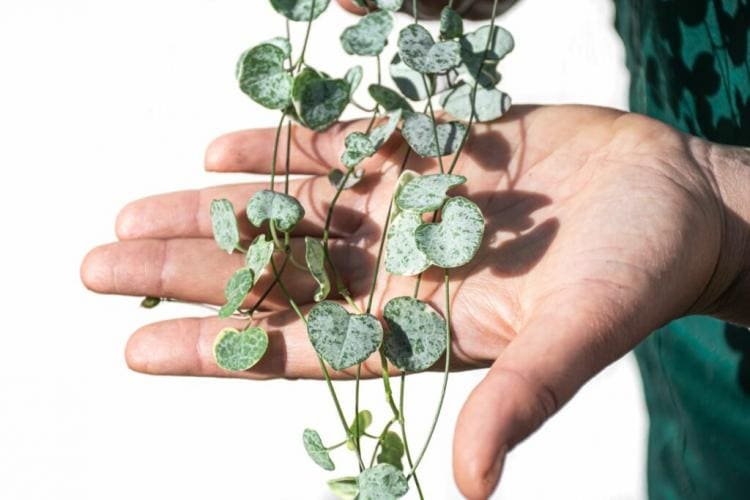
Long shoots can be cut off and used to propagate the candlestick flower [Photo: Amverlly / Shutterstock.com]
Candlestick flower is losing leaves: what can be done?
First of all, it is quite normal for some types of candlestick to shed their leaves shortly after they have sprouted. So there is nothing to worry about. Sometimes the leaves sprout again after being shed. It is therefore best to find out exactly whether your Ceropegia is a species that regularly sheds its leaves or not.
However, it is possible that the candlestick flower does not get enough water and therefore loses its leaves. Therefore, check whether the substrate is sufficiently moist. Excessive watering can also lead to waterlogging and thus to root rot and leaf shedding. If the substrate is wet, you should repot the plant in fresh substrate and water it less.
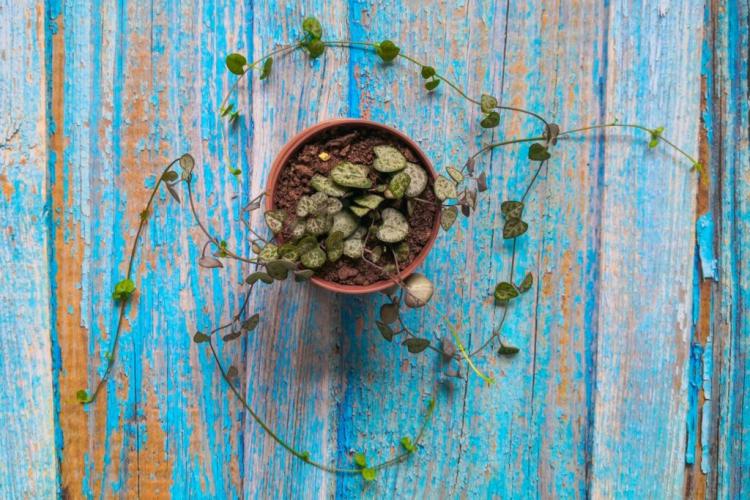
You only have to repot the candlestick flowers every two to three years [Photo: Diana Rebenciuc / Shutterstock.com]
Propagating candlesticks: cuttings, nodules or cuttings?
It is very easy to propagate a candlestick flower. For this you can use either cuttings or nodules that are located in the leaf axils of older candlestick flowers.
You can get candlestick cuttings by cutting off the shoots. This should be done in spring when the growth phase begins. Cut off a shoot that is at least 10 cm long with a sharp knife, remove the bottom leaves and let the cut surface dry for a few days to prevent rot. The shoot can then be stuck with the cut surface facing down at temperatures between 16 and 18 ° C in a substrate that is similar to that of the mother plant.
In order to propagate the candelabrum via brood nodules, collect the nodules in the leaf axils and place them on fresh substrate with a thin layer of sand on the surface so that the nodules do not rot. The nodules are pressed lightly and also kept at temperatures between 16 and 18 ° C until germination begins.
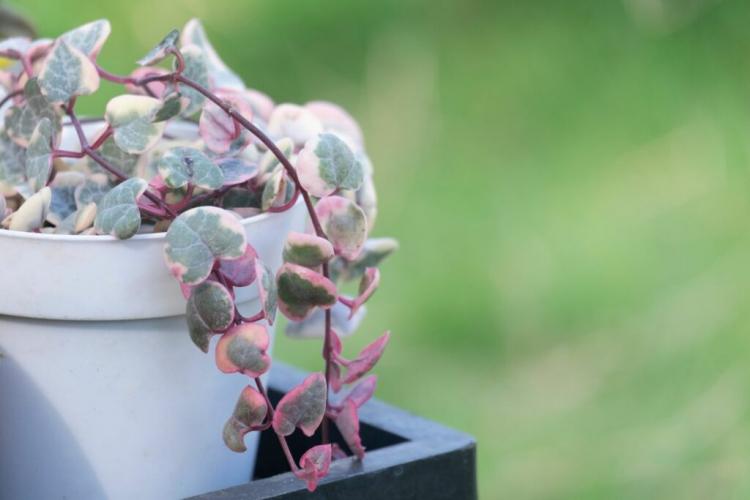
When the candlestick flowers are raised, the long shoots come into their own [Photo: panattar / Shutterstock.com]
Are chandelier flowers poisonous?
It has not been conclusively clarified whether the candlestick flowers are poisonous. Since no cases of poisoning are known, it can be assumed that candlestick flowers are non-toxic. To be on the safe side, however, neither animals nor children should be allowed to eat parts of the candlestick flower – or of ornamental plants in general.
Candlestick flowers are particularly impressive in traffic light pots with their drooping shoots. We will show you how you can make a hanging basket yourself.



